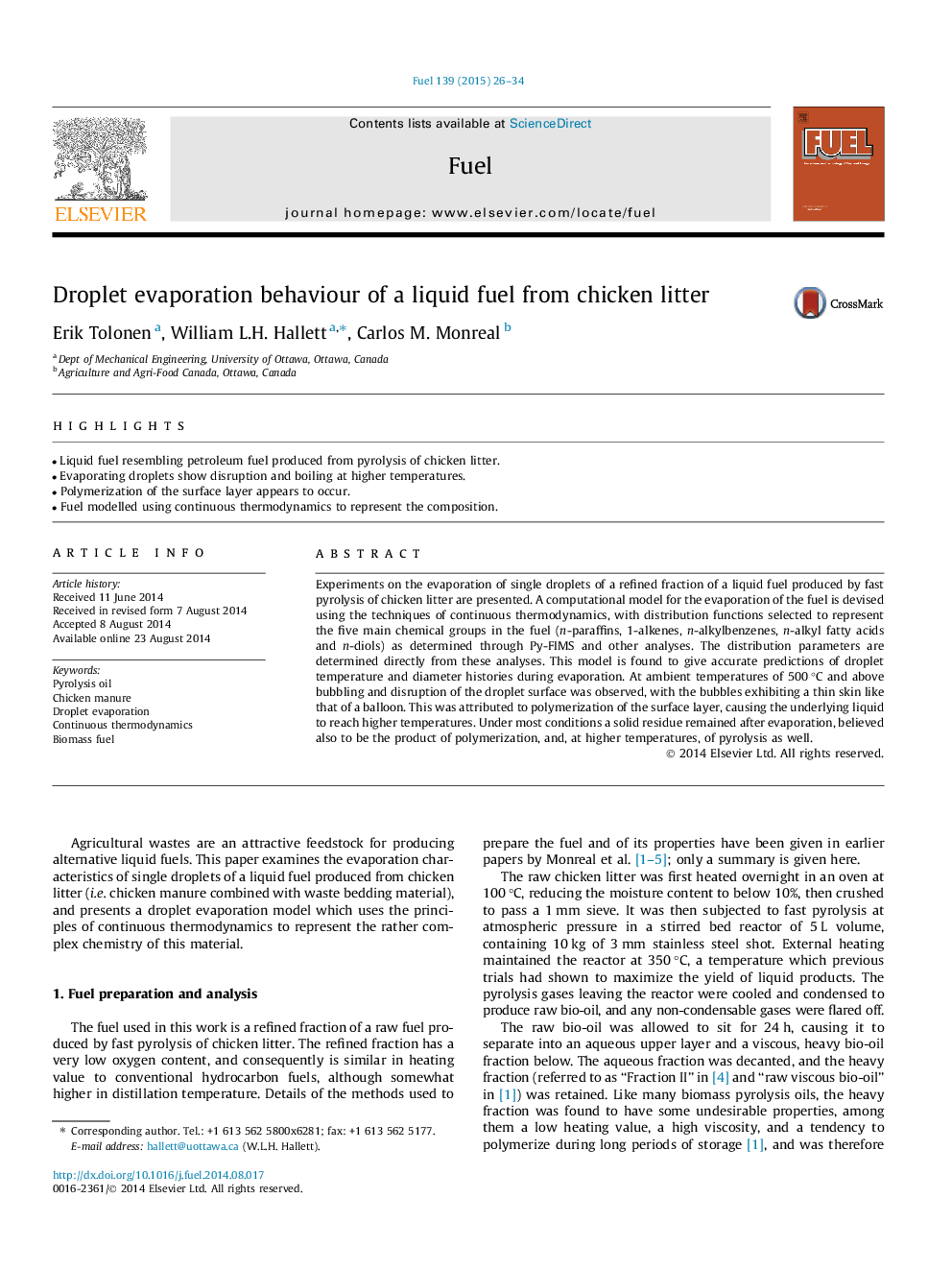| Article ID | Journal | Published Year | Pages | File Type |
|---|---|---|---|---|
| 6636265 | Fuel | 2015 | 9 Pages |
Abstract
Experiments on the evaporation of single droplets of a refined fraction of a liquid fuel produced by fast pyrolysis of chicken litter are presented. A computational model for the evaporation of the fuel is devised using the techniques of continuous thermodynamics, with distribution functions selected to represent the five main chemical groups in the fuel (n-paraffins, 1-alkenes, n-alkylbenzenes, n-alkyl fatty acids and n-diols) as determined through Py-FIMS and other analyses. The distribution parameters are determined directly from these analyses. This model is found to give accurate predictions of droplet temperature and diameter histories during evaporation. At ambient temperatures of 500 °C and above bubbling and disruption of the droplet surface was observed, with the bubbles exhibiting a thin skin like that of a balloon. This was attributed to polymerization of the surface layer, causing the underlying liquid to reach higher temperatures. Under most conditions a solid residue remained after evaporation, believed also to be the product of polymerization, and, at higher temperatures, of pyrolysis as well.
Related Topics
Physical Sciences and Engineering
Chemical Engineering
Chemical Engineering (General)
Authors
Erik Tolonen, William L.H. Hallett, Carlos M. Monreal,
